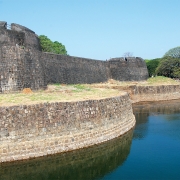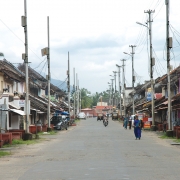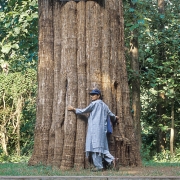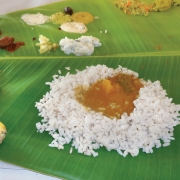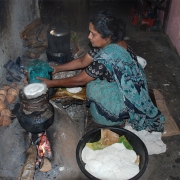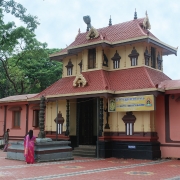
Etcetera
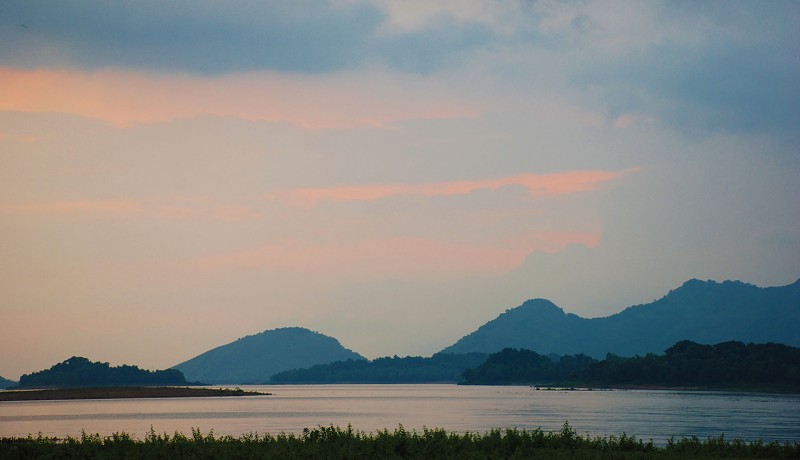
Palakkad, the scenic gateway of Kerala, is also a repository of tradition and heritage
As our train crossed the Tamil Nadu border and trudged into Kerala, the change in the scenic charm was perceptible. The Sahyadri range stood sentinel-like, guarding the region and heralding a welcome to Palakkad (also known as Palghat), the Gateway of Kerala. Swaying palmyras and vast expanses of paddy fields opened up before us. With torrential monsoon rains having washed the land clean, nature was at her dramatic best. The verdant fields emerged greener, refreshed, and ready for harvesting.
After a customary visit to my kith and kin, I decided to explore the tourist attractions in Palakkad. Once a beautiful forest of pala (Indian devil) trees, today Palakkad is synonymous with the misty mountain ranges of Nelliyampathy, Parambikulam Wildlife Sanctuary and Silent Valley National Park. Parambikulam, a great birding getaway, was once the favourite haunt of legendary ornithologist Salim Ali. Incidentally, it also boasts the first-ever scientifically managed teak plantation and the world’s tallest and oldest teak trees.
Palakkad abounds in rivers, dams, and ancient temples. Bharathapuzha, the longest river in the state, meanders through the district. But there’s more to Palakkad than its natural splendours. As I entered the heart of town, the old, granite fort built by Hyder Ali in 1766, with its imposing bastions and deep moat, loomed into view. The fort was captured by the British and modified in 1790. Among the best preserved forts in India, it has thick laterite walls.
About 14 km from Palakkad is the Malampuzha Dam and garden complex on the banks of the Bharathapuzha. We saw busloads of weekend crowds making a beeline to the children’s park, mini zoo, snake park and fish-shaped aquarium in the complex. Japanese gardens and the hanging bridge are also major crowd-pullers. But it is the imposing concrete sculpture of Yakshi, the divine enchantress, sculpted by the renowned Kanai Kunhiraman, which dominates the landscape.
A ropeway offers a panoramic view of the gardens, the distant hills and the blue expanse of the reservoir. The Rock Garden of Malampuzha, built by the late Nek Chand, has murals of Kathakali, Mohiniyattam, Kalari and racing boats, all made of waste materials such as broken pieces of bangles, tiles, used plastic cans and tins.
Palakkad is also famous for its many temples. First on my list was the historic Jain temple of Jainimedu, which still has vestiges of Jainism. Jainimedu was once a thriving community of diamond traders till Tipu’s invasion drove them to Wayanad. The 15th century granite temple has images of Jain thirthankara and yakshini.
Emur Bhagavathy temple at Kallekulangara, where I went next, has a pair of hands enshrined in the sanctum sanctorum. The Goddess is worshipped in myriad avatars here: at dawn, she is Saraswati, at noon Lakshmi, and in the evening she is worshipped as Durga. Late prime minister Indira Gandhi is said to have visited the temple several times to pay respects to the ‘hand’ symbol. Meanwhile, the nearby Vadakkanthara temple, devoted to Bhadrakali, boasts some unique rituals including the bursting of 101 crackers daily in the morning and evening to drive away evil spirits.
No trip to Palakkad is complete without exploring Kalpathy, a heritage village housing the oldest agraharam or Brahmin settlement on the banks of Kalpathy River, a tributary of the Bharathapuzha. It comprises five villages established in the 12th century by migrant Brahmins from Thanjavur. A rich amalgamation of Tamil and Kerala culture is palpable here.
As we ambled in the century-old agraharam, we got a glimpse of village life half-frozen in time: Brahmin priests chanting Sanskrit slokas, women clad in traditional nine-yard saris drawing kolam or rangoli in front of their houses, and strains of nadaswaram (a wind instrument) from the neighbour-hood temple.
Streets with houses abutting both sides and a temple for each settlement are a typical feature of the agraharam. However, in modern buildings, the patthayam or granary has disappeared and cowsheds have been relocated. Houses have retained their old frontage, while sanitation and other improvements have been made inside.
The spectacular Kalpathy theru (car festival), when the deity from Viswanatha Swamy temple is taken out, installed in the chariot and hauled through the streets around the temple, is another highlight. Kalpathy comes alive during November not only with the car festival but music, concerts and street fairs. Some of the best names in Carnatic music such as Chembai Vaidyanatha Bhagawathar, M D Ramanathan and Palakkad Mani Iyer hail from here.
Incidentally, Palakkad cuisine is a unique combo of elements of cooking from both Kerala and Tamil Nadu. Authentic culinary delights in Palakkad include homemade delicacies such as rice murukku, a crunchy snack, chakka varatiyathu (jackfruit halwa), special varieties of fresh banana, jackfruit and tapioca chips and kondattam made from dried vegetables, pickles, cheeda (a snack made from rice flour) and veppilakatti (spiced leafy chutney powder).
On the last day of my sojourn, we embarked on a culinary trip to the nondescript village of Ramassery to taste the ubiquitous idli—flat, circular and only half an inch in thickness. These idlis are described as a cross between a traditional dosa and an idli. We saw the idlis being steam-cooked in unglazed earthen pots on tamarind tree wood fire.
We had piping hot idlis with sambar, a fiery coconut chutney and delicious ‘gunpowder’. The taste of the idlis and the earthy aroma lingered long after our return from Palakkad.
FACTFILE
GETTING THERE
By air: Coimbatore, the nearest airport, is 55 km away.
By rail: Palakkad Junction and Palakkad Town, the nearest railheads, are well connected to other major railway stations.
By road: There are regular bus services from other major cities to Palakkad.
ACCOMMODATION
Hotel Indraprastha; Tel: 0491-2534643; Sayoojyam Residency; Tel: 085475-04549 KTDC Tamarind; Tel: 04924-236404
TIPS
- To go to Silent Valley National Park, part of the Nilgiri Biosphere Reserve, one can hire a jeep from Mukkali.
- Visitors are permitted only up to Sairandhri, site of the proposed dam.
Text & Photos: Susheela Nair Featured in Harmony — Celebrate Age Magazine July 2018
you may also like to read
-
Cracking the longevity code
Small yet impactful choices can be game-changers, writes Srirekha Pillai At 102, there’s no stopping Chandigarh-based Man Kaur, the world’s….
-
Home, not alone
While a regulatory framework is vital for senior-care facilities, the need of the hour is to develop an ecosystem to….
-
Birthday Girl
Published in a special edition to honour Japanese master storyteller Haruki Murakami’s 70th birthday, Birthday Girl (Penguin; Rs 100; 42….
-
A huge treat for music lovers
Published as the revised and updated second edition, Incomparable Sachin Dev Burman (Blue Pencil; Rs. 599; 470 pages) the authoritative….



